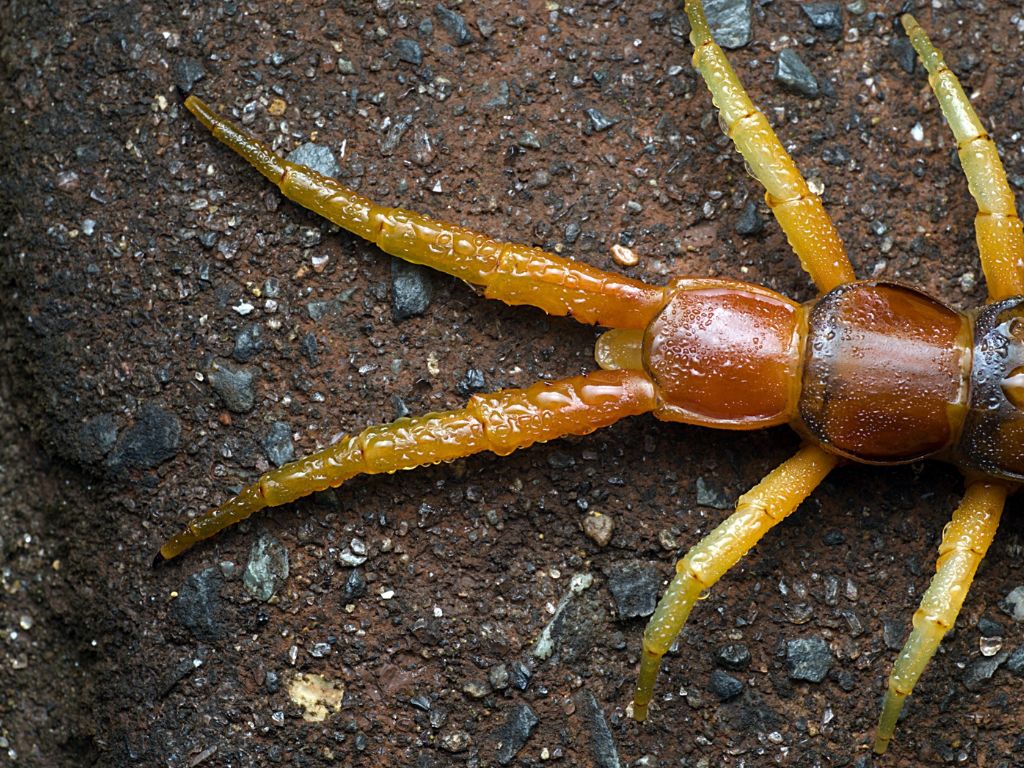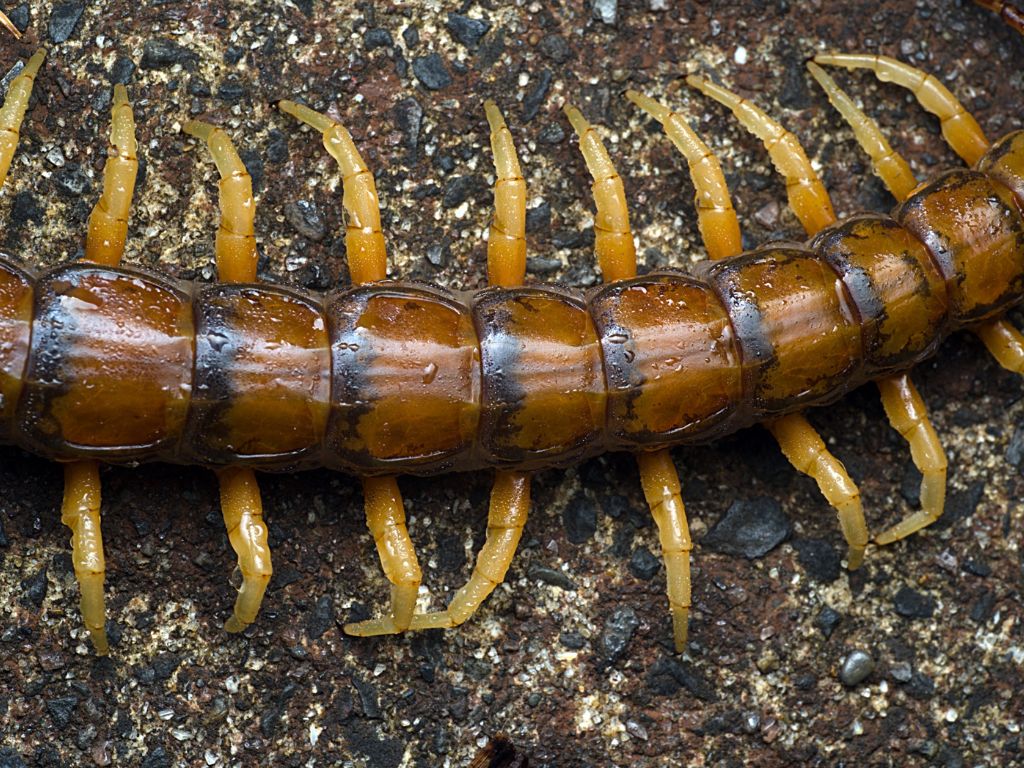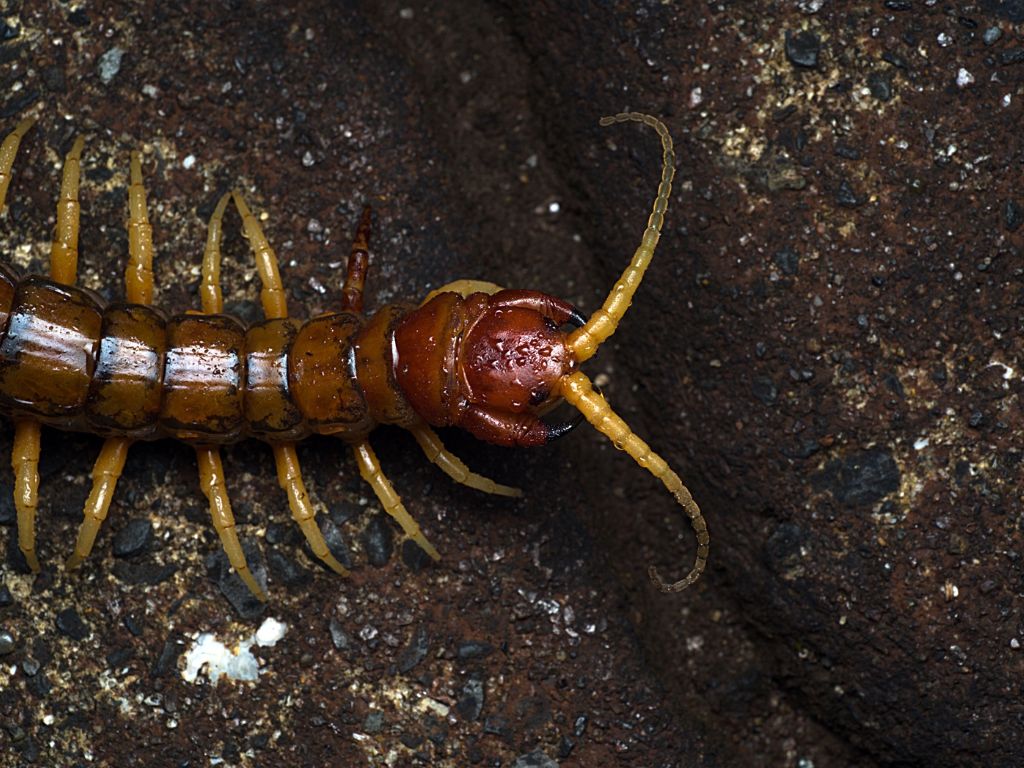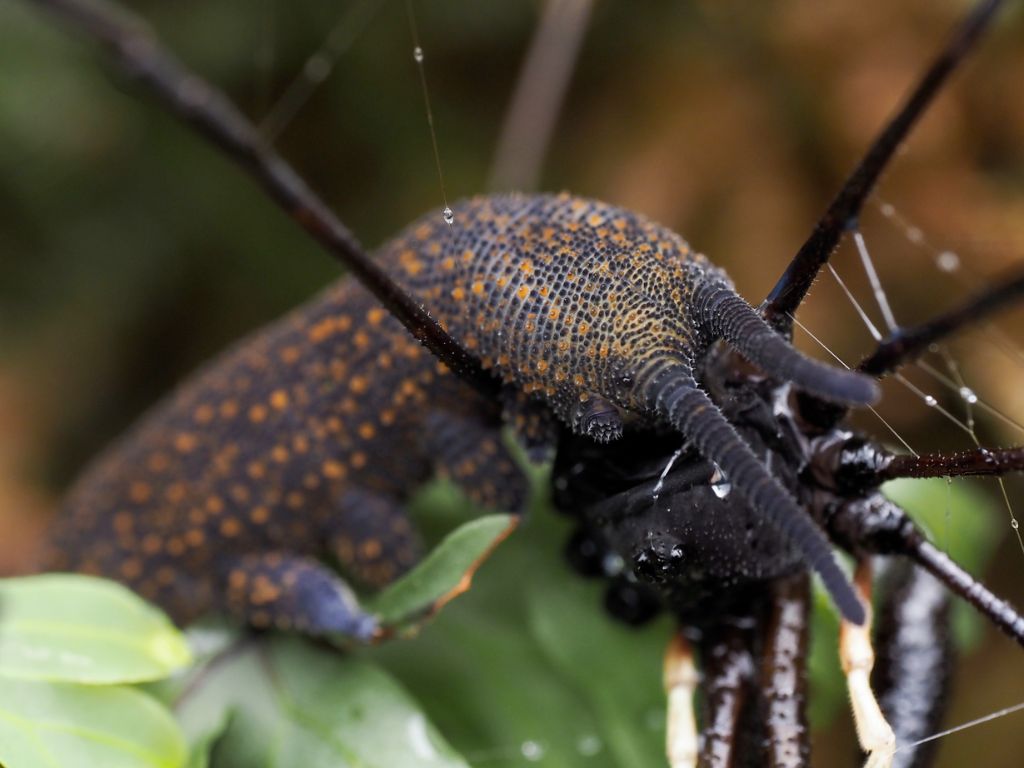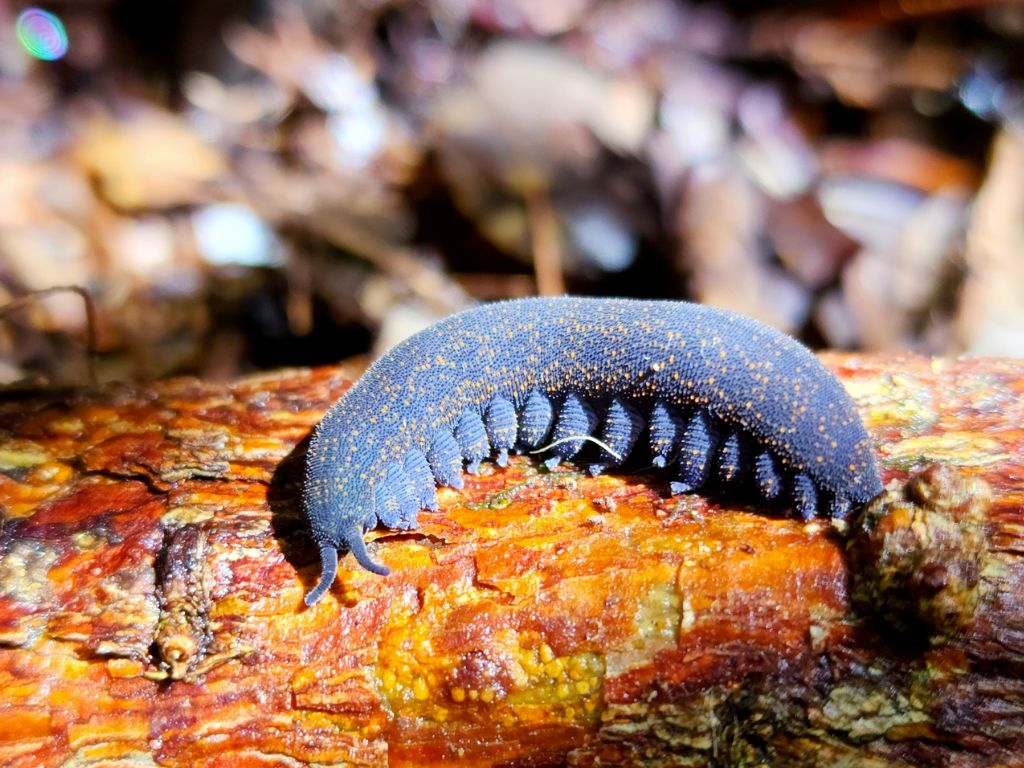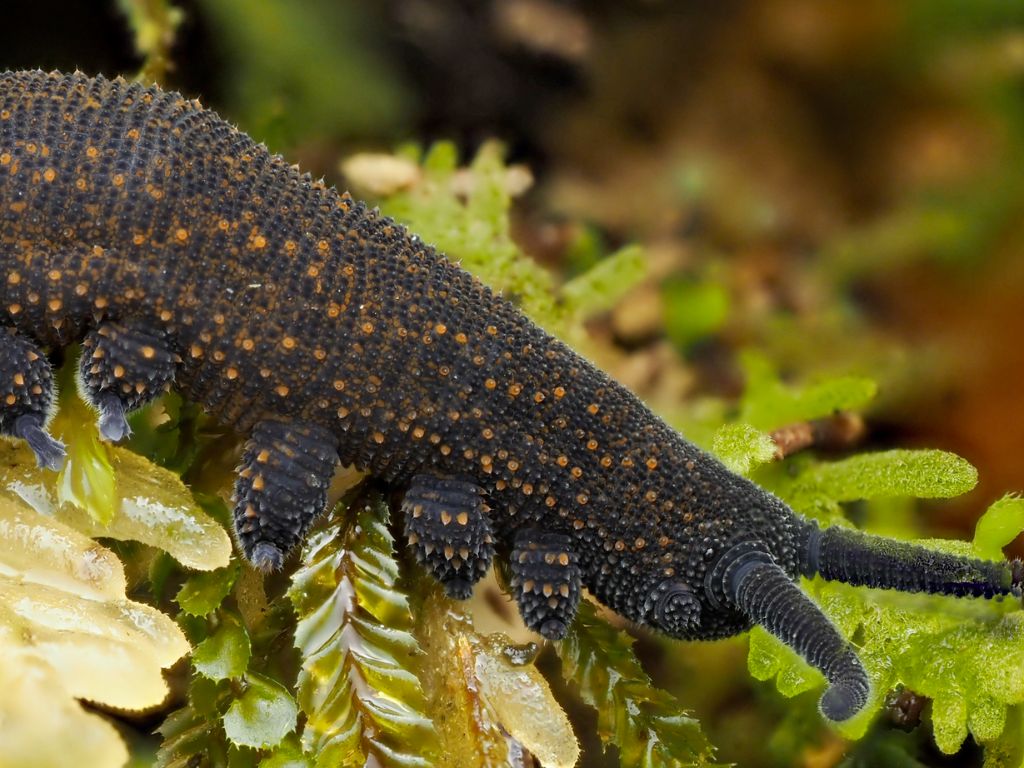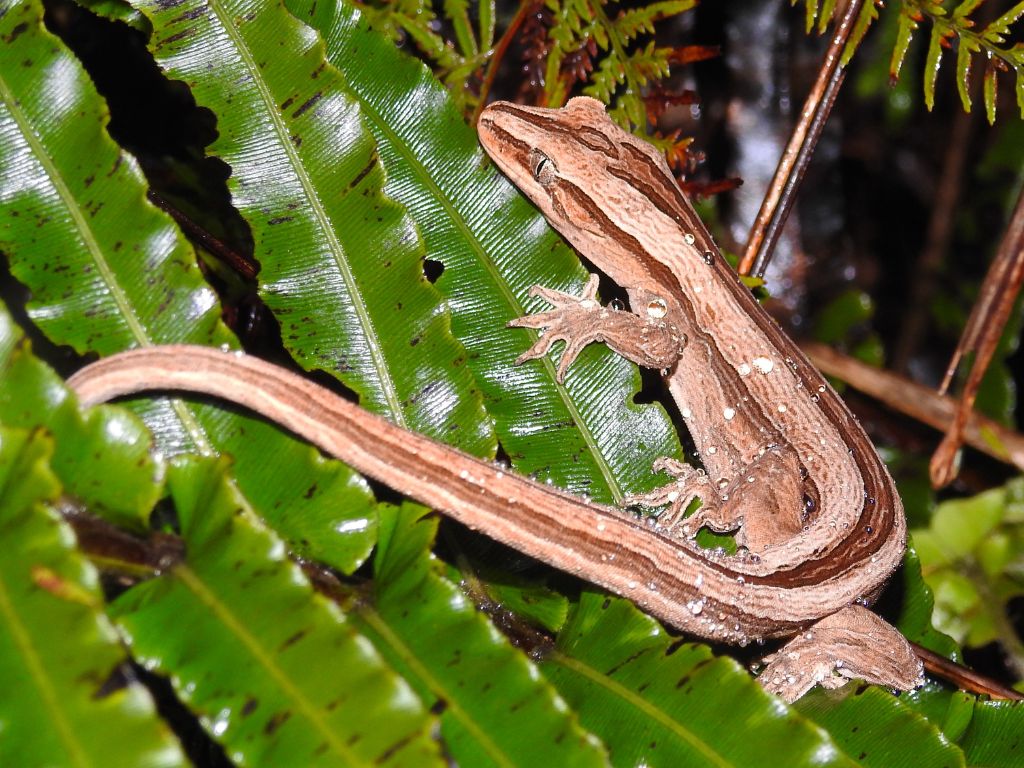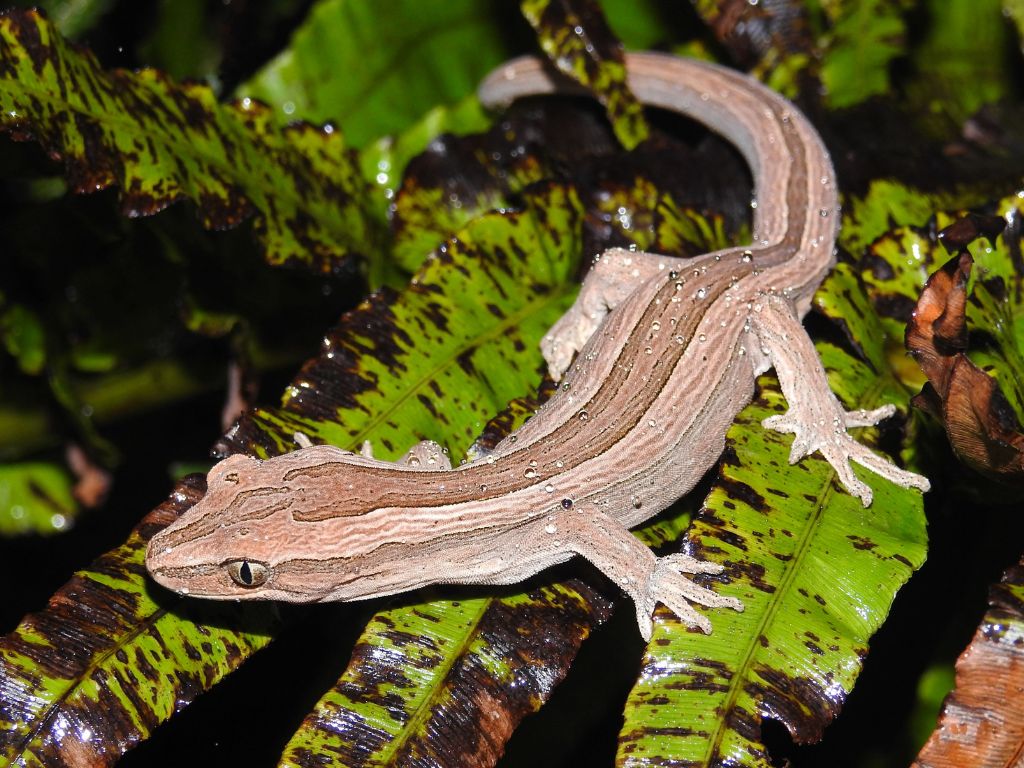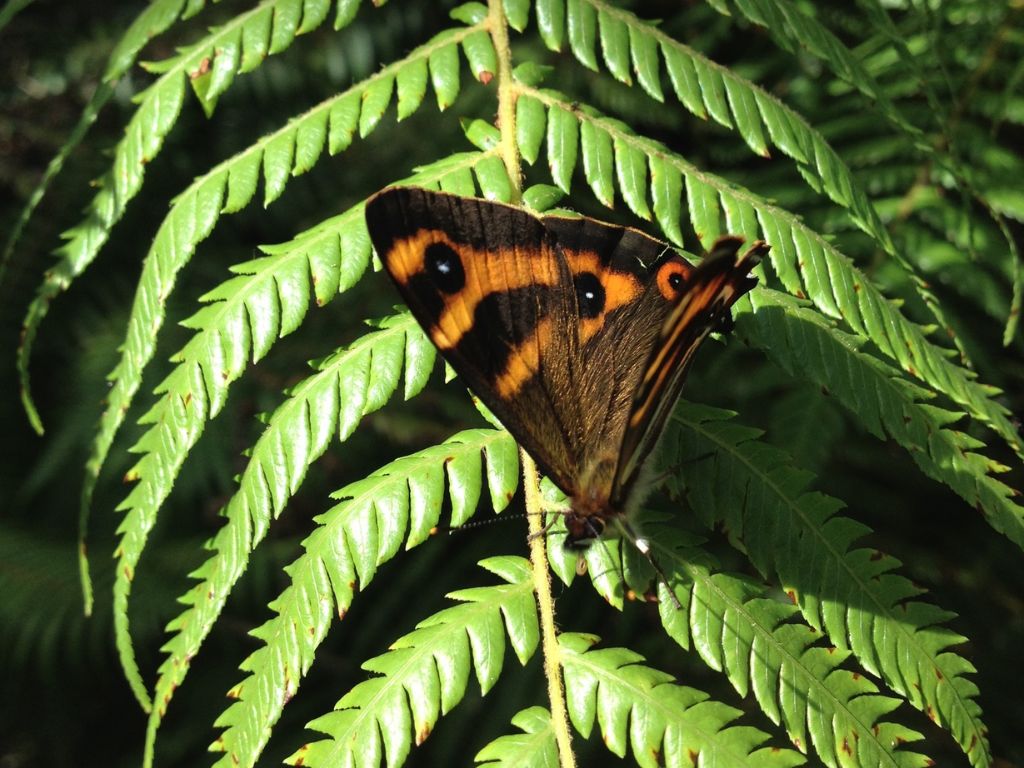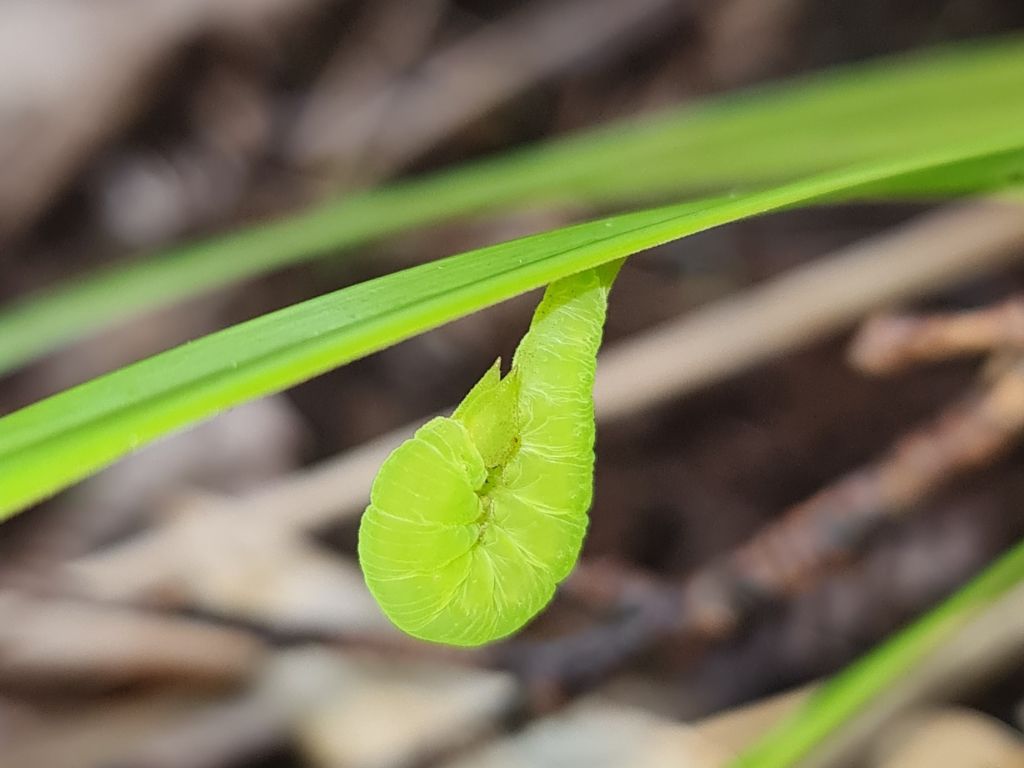A velvety creature rears its head, shoots sticky glue, and then dissolves its prey into a delicious soup. Nearby, a different many-legged critter rustles through the leaf litter, large pincers closing around its prey. When the sun goes down, a whole new world wakes up in this native forest subdivision.
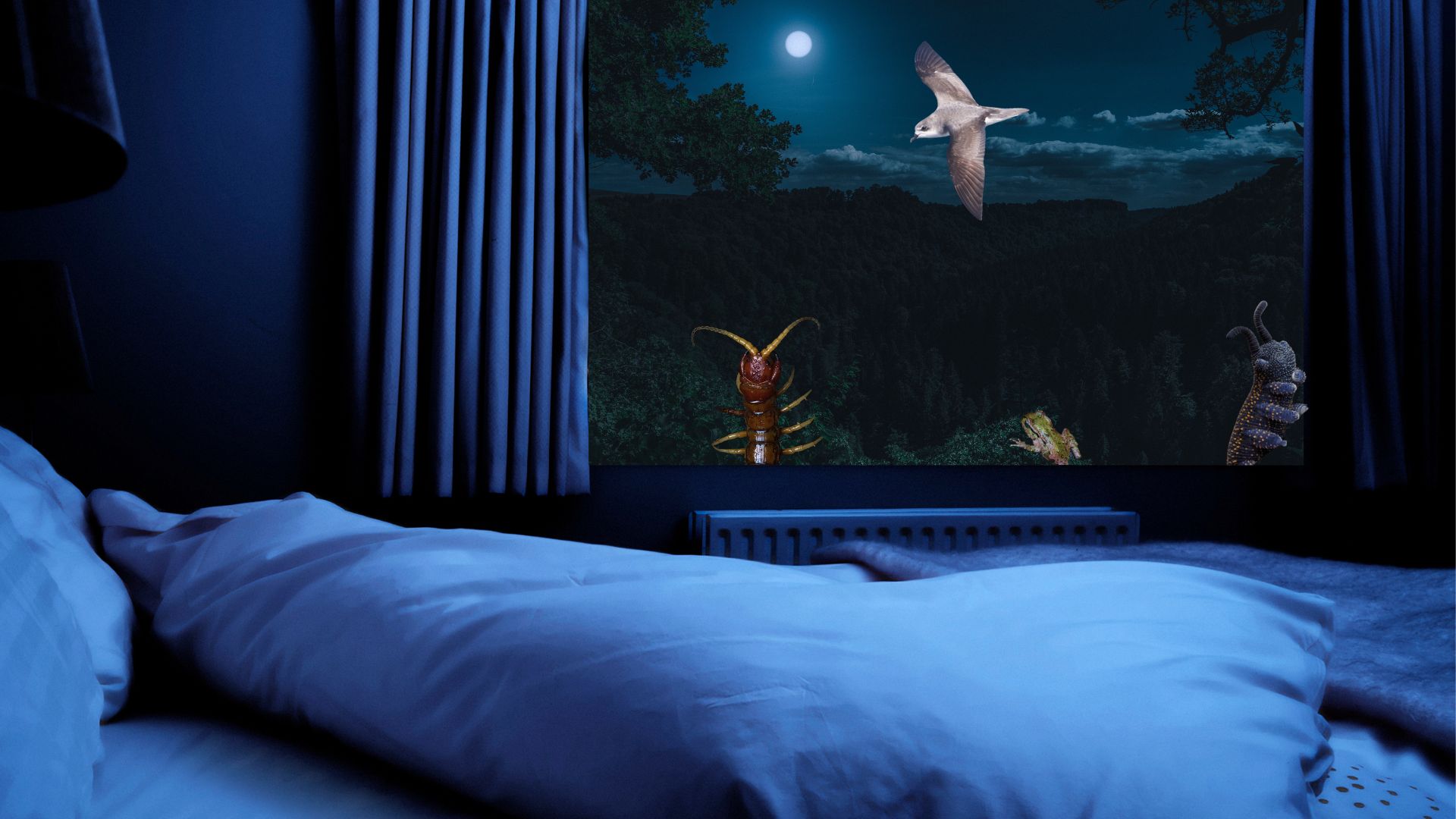
Yes, we said subdivision. Halfway between Coromandel town and Whitianga, 24 properties are nestled in 580 hectares of forest habitat, protected by a QEII covenant and intensive predator control. Sara Smerdon, conservation advocate for Mahakirau Forest Estate, shares with us the nighttime enchantments of the lush bush where she lives and works.
Hara or hura (NZ giant centipede)
Only found in the North Island, these native giants boast poison claws, which they use to capture and poison their prey. We don’t know exactly how long they can get – some sources say 16cm, others say 25cm.
Once, when dismantling her tent deep within the estate, Sara discovered a massive female protecting a nest directly under where her pillow had been.
Ngaokeoke (peripatus, velvet worm)
An ancient invertebrate that looks like a caterpillar with velvety grey-blue skin and stumpy legs, peripatus aren’t worms, caterpillars, or slugs. They are mysterious and defy classification.
They shoot glue from glands on their head to catch prey. Once caught, the peripatus will puncture and pump saliva into the victim and suck out its liquidised innards. They are typically seen on humid or wet nights, crawling on tree ferns or rotten wood.
Pepeketua (Archey’s and Hochstetter’s frogs)
Forget what you think you know about frogs – NZ frogs are internationally distinct. Archey’s frogs don’t have a tadpole stage; they hatch as almost fully formed frogs and ride around on the father’s back.
Like the other native frogs, Hochstetter’s frogs are clumsy hoppers. They jump, landing in a “belly flop” fashion, then have to reposition their limbs for take-off for the next jump.
Torupuku (Northern Striped gecko)
For a while, these slender, stripey lizards were so rarely seen that they were considered the rarest gecko in the world. However, Sara has been studying them with the Auckland Zoo since 2016 and has noted over 150 individuals within Mahakirau (85% of their total known population).
Recent research adds to the knowledge of their behaviour, involving a Master’s student from Otago University fitting tiny radio transmitter backpacks to the geckos to study their habitat usage.
Pycroft’s petrel
Few people have seen these small seabirds as they breed on offshore restricted islands and forage far out at sea. But for several years, a few have landed on the doorstep of Mahakirau, possibly prospecting for new, safe nesting sites.
They burrow and are extremely clumsy (and noisy) getting back into the air – so they are highly susceptible to mammalian predators. Pycroft’s petrels are particularly active on nights with no moon and during wet, stormy weather.

Pēpepe pōuri (Forest Ringlet butterfly)
The forest subdivision is one of the last strongholds for this species. Only a few hundred people have seen one in person – they are rare, endemic and the only species in their genus, Dodonidia.
Mahakirau has hosted scientists from the UK, visiting to add to the knowledge on this species on the brink of extinction.
They are extremely fast and erratic flyers, making them difficult to observe, but if you are patient, they’ll likely return on a flight loop.
Ferrets and stoats
More than 3,000 traps and bait stations are strategically placed throughout the estate to suppress predators such as rats, possums, stoats, ferrets and feral cats – consistent reinvaders of the forest estate.
Volunteers tirelessly run the programme and take pride in seeing signs of wildlife rejuvenation. It’s an ongoing mission, and unfortunately, ferrets and stoats are also creatures who come out at night to hunt.
In 2023, Sara delved into the stomach contents of trapped ferrets. One female had recently consumed at least four native frogs, sadly both Archey’s and Hochstetter’s.
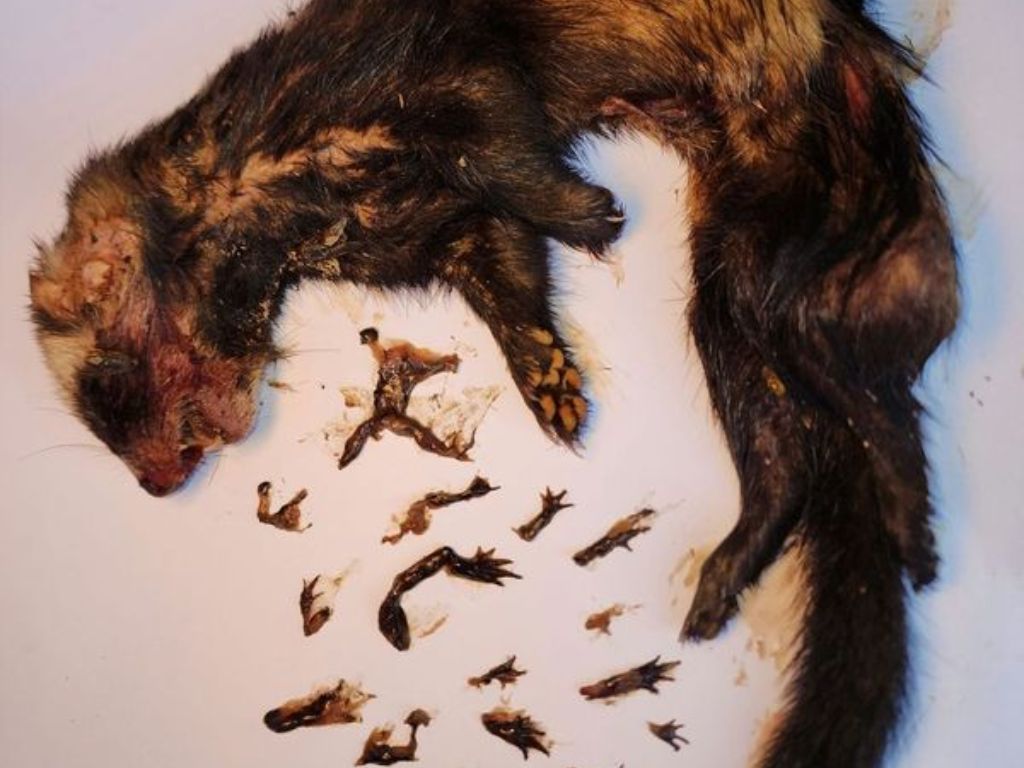
Recent eDNA testing also discovered a smorgasbord of native species in stoat diets – most of those in this article were detected, including the critically endangered frogs, geckos, and seabirds. Impressively, they even eat giant centipedes! More birds made the list, too, such as tūī, kererū but fortunately, no kiwi.
In 20 years, Mahakirau has removed more than 15,000 invasive predators from the forest ecosystem, including over 10,000 rats, 1,700 stoats and 35 ferrets – saving the nocturnal wonders featured in this story and allowing them to produce the next generation of their species, keeping the rich, endemic matrix of nature at home on the Coromandel Range.

